|
This month's collection of tidbits truly is a potpourri. No particular theme, just whatever has caught my eye and mind. The first two quotations, though, really hit home, since lately I've been spending more time than usual staying in one place and sitting still. We spend most of our time and energy in a kind of horizontal thinking. We move along the surface of things . . . [but]there are times when we stop. We sit still. We lose ourselves in a pile of leaves or its memory. We listen and breezes from a whole other world begin to whisper. -- James Carroll, novelist When we commit to a particular place, a certain element of choice is removed. We are free to dig in, and allow ourselves to be mentored by the life around us. We begin to see the world whole instead of fractured. Long-term strategies replace short-term gains. Routine opens the door to creativity. -- Terry Tempest Williams, in The Open Space of Democracy Readers have been changed by books--it is not such a large step to think that the world could be changed as well. -- Sharon Rab, founder, Dayton Literary Peace Prize, quoted in Poets & Writers magazine, May/June 2017 There is a theory which states that if ever anybody discovers exactly what the universe is for and why it is here, it will instantly disappear and be replaced by something even more bizarre and inexplicable. There is another theory which states that this has already happened. -- Douglas Adams, author Ideas are contagious; emotions are contagious; hope is contagious; courage is contagious. -- Rebecca Solnit, writer, historian and activist Sooner or later we all discover that the important moments in life are not the advertised ones, not the birthdays, the graduations, the weddings, not the great goals achieved. The real milestones are less prepossessing. They come to the door of memory unannounced; stray dogs that amble in, sniff around a bit, and simply never leave. -- Susan B. Anthony, social reformer and women's rights activist Besides the noble art of getting things done, there is a nobler art of leaving things undone . . . The wisdom of life consists in the elimination of nonessentials. -- Lin Yutang, Chinese writer and educator Let mystery have its place in you; do not be always turning up your whole soil with the ploughshare of self-examination, but leave a little fallow corner in your heart ready for any seed the winds may bring.
-- Henri Frédéric Amiel, Swiss philosopher, poet and critic
4 Comments
 Bumblebee and lupine Bumblebee and lupine Break out the honey cakes and raise a glass of mead—it's National Pollinator Week! You probably won't find the observance pre-printed on your wall calendar, but it's worth penciling in as a reminder to honor those buzzing, fluttering, hovering creatures whose efforts are essential to so many plants we prize. I learned about this celebration of pollination from an item in the summer issue of Michigan Nature, the magazine of Michigan Nature Association. From there I went on to find out more from Pollinator Partnership, a group devoted to promoting the health of pollinators through conservation, education and research.  Milkweed visitor Milkweed visitor Bees and butterflies usually come to mind when we think of critters that flit from flower to flower, sipping nectar and distributing pollen in the process. Those are important pollinators, for sure, but birds, bats, beetles and other animals also do the job.  Moment of repose Moment of repose And a vital job it is. Globally, some 1,000 plants grown for food and drink, fiber and pharmaceuticals depend on animal pollination for successful fruit and seed production. If you fancy chocolate, coffee or blueberries, if you have a passion for pumpkins, potatoes or peaches, if you're an apple or almond aficionado, if you treasure the tequila in your Margarita, praise pollinators!  Sharing the wealth Sharing the wealth But pollinators need more than praise. They need protection. In many parts of the world, including this country, pollinating animals are suffering the effects of diseases, parasites, harmful chemicals, habitat loss and invasive plant and animal species. How can you help? 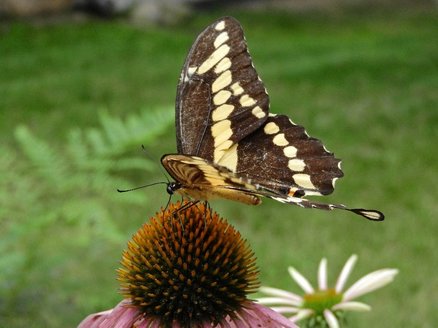 Swallowtail on coneflower Swallowtail on coneflower One of the biggest ways is by making your piece of the Earth—whether pocket garden or multi-acre spread—pollinator-friendly. Reduce pesticide use, install bee and bat houses, and cultivate native plants that attract pollinators and provide nectar and larval food. (You can find a guide to appropriate plants for your area by entering your zip code here.)  Black-eyed susan Black-eyed susan For several years, I've been buying native plants from our local conservation district's annual sale and encouraging the native species already growing on our property by saving and scattering their seeds and clearing away invasives that would choke them out. The lupine, coneflowers, columbine, prairie smoke, bee balm and black-eyed susans have rewarded me with floral displays and the entertaining antics of their winged visitors. I'm hopeful the milkweeds and blazing stars are mature enough to bloom this year. I'll be sure to share the results when they do. And once my broken foot is healed and I'm more mobile, I hope to take you on a tour of my friend Sandy's flourishing native plant garden—a delight for pollinators and people alike. Learn more about pollinators by visiting Pollinator Partnership's Learning Center. For more about native plants and native landscapes, connect with the national, not-for-profit organization Wild Ones. Useful books on native plants and their role in sustaining wildlife: Bringing Nature Home, by Douglas W. Tallamy (Timber Press, 2007) The Natural Habitat Garden, by Ken Druse, with Margaret Roach (Clarkson Potter, 1994; paperback Timber Press, 2004) All photos by Nan Sanders Pokerwinski
It was the Friday before Memorial Day, that gateway to the good times of summer, and I was anticipating the weeks ahead. Sunny days for hiking, bicycling, kayaking, diving into household and outdoor projects, and just plain getting out and doing things without having to negotiate snow and ice. My mind was so occupied with such leisurely thoughts, I hardly noticed the ache across the top of my foot that morning. Around the time I was ready to leave for that afternoon's trek with the Wander Women, the ache asserted itself more aggressively, and I considered skipping the hike. But it was such an ideal hiking day—blue-skyed, cloud-fluffed, warm but not hot—I couldn't resist. And anyway, my foot felt much better in my hiking shoe. Until about three miles into the hike. Then it really started to hurt. I limped the last mile and a half, drove home, iced the foot and brushed aside Ray's suggestion to visit Urgent Care. It didn't hurt that much. Not enough to interfere with our weekend plans. After hobbling through the weekend and holiday, I finally admitted the foot wasn't getting any better. An x-ray revealed the reason: a fracture of the third metatarsal. I was fitted with a clunky walker boot, given a referral to an orthopedic surgeon and sent home to contemplate this turn of events. Clearly, summer would not be quite as I'd envisioned. I didn't waste time moping, though. No siree, I sat down and made a list of things I still could do: writing, reading those piles of accumulated books and magazines, answering email, calling friends, making phone calls and writing letters in support of causes, creating collages, meditating, planning our fall vacation, organizing and editing photos, even shooting new photos of critters from the back porch. Good for me! Lemonade from lemons and all that, right? Yeah, about that . . . A few days after making that upbeat list, I got restless and pulled out the list for inspiration. All those housebound activities didn't seem nearly as appealing as when I'd written them down—especially when another sunny day taunted me just outside the windows. Plus, I'd realized that the list of things I still could do also included things I'd just as soon not: paying bills, cleaning out files, and performing a surprising number of household and chores. B-o-r-i-n-g.  The last subverted summer, 2006, after a little motorcycle mishap (Photo: Ray Pokerwinski) The last subverted summer, 2006, after a little motorcycle mishap (Photo: Ray Pokerwinski) Then I moped. But moping got boring pretty quickly, too, so I figured it was time to give myself a pep talk on adaptability and making the best of a disappointing situation. Fortunately, My Self is something of an authority on the subject, having had ample experience with subverted summers: three previous foot fractures and a spinal fracture over the past 24 years, each one occurring sometime between Memorial Day and mid-July. 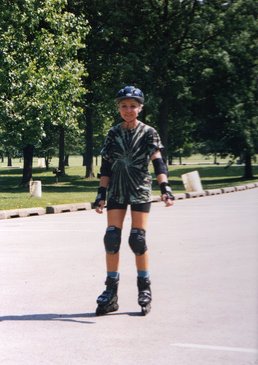 This is what I had in mind for the summer of 1995 (Photo: Ray Pokerwinski) This is what I had in mind for the summer of 1995 (Photo: Ray Pokerwinski) I'd even written a magazine article about the summer I broke my back—the summer we'd planned a month-long motorcycle trip through the Blue Ridge Mountains, as well as weekends of Rollerblading and bicycling in the park. The summer with a few definite plans and plenty of room for following whims.  Instead, I ended up with a back brace and a black eye from a fall down the stairs (on the way to do laundry -- a very hazardous activity!) (Photo: Ray Pokerwinski) Instead, I ended up with a back brace and a black eye from a fall down the stairs (on the way to do laundry -- a very hazardous activity!) (Photo: Ray Pokerwinski) As I wrote in the article: When I thought about happenstance, of course, I was envisioning the merry kind that brings opportunities and delights. But when serendipity stepped in and made choices for me, it knocked me flat . . . What I didn't realize was that fate, in fact, had intervened to give me the break I had longed for—not exactly the way I had imagined it, but a break all the same. With my choices suddenly so limited, life had to get simpler. Time had to slow down. Then, as now, I occupied myself catching up on articles I'd clipped and saved to read when I found the time. One, on the unlikely topic of the benefits of poor health, made the point that having to step off the treadmill of everyday life and let things go on without your participation can be a chance to reflect and make needed changes. That I did. I reflected on the work I was doing and how I'd like it to be different—a train of thought that led to a new, more creative way of working. I also used the time to experiment with various kinds of writing and explore visual arts in ways I'd not had time—or nerve—to try before. In the process, I learned to care more about satisfaction than accomplishment, to let interests drive me more than ambition—lessons that set the stage for the kind of life I'm living now (or trying to).  Once again off the treadmill (Photo: Ray Pokerwinski) Once again off the treadmill (Photo: Ray Pokerwinski) Back then, I was stepping away from a hectic, deadline-driven life. This time, the treadmill I'm stepping off moves at a significantly slower rate. Still, the shift in activities and expectations should offer a chance to reflect and consider new directions. I wonder what I'll discover this time and where those discoveries will lead. Meanwhile, my change of summer plans also means changes of plans for HeartWood. I had envisioned gathering blog material in trips to festivals, friends' gardens, local labyrinths and other points of interest. Some of that still may happen, but for a while at least, I won't be venturing out as much as I'd imagined I would.  This can be YOU! (Pipe and fedora optional) This can be YOU! (Pipe and fedora optional) That's where you come in. I hereby deputize all HeartWood readers to be official correspondents. If, in your summer ramblings, you have experiences you'd like to share in words, pictures or both, I'll be happy to give you space to do that here at HeartWood. Just get in touch and we'll work out the details. I hope you'll take me up on the offer!  Around mid-summer last year, I wrote about the energizing way a group of friends and I started most weeks: Monday morning yoga class with our teacher Ellie Randazzo at her Woodland Yoga studio and after-class breakfast at Hit the Road Joe Coffee Café. "No matter how I feel when I wake up on a Monday morning," I wrote, "I'm always uplifted and ready to take on the world (or at least my small part of it) after that session of physical, spiritual and social activity."  Ellie Randazzo Ellie Randazzo My yoga-mates were all just as appreciative. "Her classes helped change my body from pain to gain," says Sue Schneider, who knew our teacher through Ellie's work with animal communication and essential oils before joining Ellie's yoga class.  Marsha and Sue practicing together Marsha and Sue practicing together "Ellie's yoga was holistic like no other yoga I've experienced," adds class member Marsha Reeves, who's going on four years with the group. "She connected with our minds, bodies and spirits with loving kindness and helped us grow and learn in all those dimensions." Our Monday routine was such an essential part of our lives, we couldn't imagine it ever changing. Then it did. 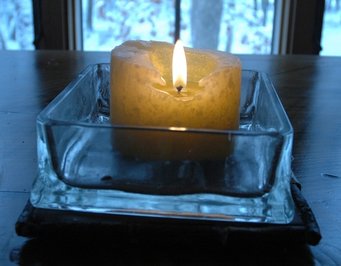 Just a few weeks after I wrote that blog post, Ellie's unexpected death left us all numb. Yet we knew the only way to honor Ellie's memory was to find a way to go on. She had always taught us that growth is all about adapting to the changes life inevitably brings. So we continued meeting and practicing yoga together on Monday mornings, with any class members who had enough space in their homes for ten or fifteen yoga mats taking turns hosting us. "It was an important time of sharing and healing, as we practiced in each other's homes, each contributing to the practice," says Brenda Huckins Bonter, a longtime member of the group. "I believe we became even stronger and more committed to our practice." That arrangement worked fine, but when Ellie's husband Mike offered to let us practice in Ellie's studio, we knew that was where belonged. Those first sessions back at Woodland Yoga were tearful, yet joyful. Even as Ellie's absence tore at our hearts, her presence was palpable—in her photo on the altar table at the front of the room, as well as in the memories of her words and guidance that flooded back whenever we entered the space.  Ellie loved flowers, and we loved Ellie's flowers Ellie loved flowers, and we loved Ellie's flowers "It felt so good to be—and practice—in Ellie's space, with her gardens in viewing distance," says Valerie Deur, who's been practicing with the group since it began, around 15 years ago. "Being there helped me heal." After a few months, another change came—one so wished-for we pinched ourselves to be sure we could believe it. Ellie's sister-in-law, Behnje Masson of From the Heart Yoga & Tai Chi Center in Grand Rapids, agreed to drive up twice a month to teach us at Woodland Yoga—a round trip of about 80 miles.  We couldn't have asked for a more perfect fit. Behnje's training and teaching style are much the same as Ellie's, and most of us already knew Behnje—through Ellie, through taking classes at From the Heart, or from the healing class she had led for us after Ellie's death. Though we'd enjoyed our self-directed weekly sessions, having a teacher to guide us again inspired new dedication to yoga practice and principles. Behnje agrees the fit is good. "I am grateful and honored to be welcomed into such a heartfelt and dedicated community," she says.  A sunny windowsill in Kathy's studio A sunny windowsill in Kathy's studio After a couple of months of classes with Behnje, another change. Mike needed to convert the studio space into living quarters for a relative who was moving to the area. Sad as we were to leave that place, we could practically see Ellie smiling as a solution seamlessly appeared. Ellie's sister Kathy Powell Reider, who lives just down the road, was converting her basement into a studio for her yoga nidra and meditation classes. We were welcome to use that space for our classes with Behnje and our practice sessions on alternate weeks. More glad news: Behnje would resume the men's yoga class that Ellie had taught for a small group that includes Ray and the husbands of several other class members. Just before the move, a group of us pitched in to paint the studio and an adjacent meditation room a serene shade of blue.  "Helping to prepare that space was an opportunity that helped us get ready for yet another change," reflects Sue. And working together on the rooms "helped us to bond even more," adds Brenda.  The magical setting of Fae Wood Studio The magical setting of Fae Wood Studio Announcing the new studio in an email, Kathy wrote, "Though Ellie has passed, this place continues Ellie's work as well as mine." The photo she included with the announcement showed a shimmery presence that inspired the studio's name. "Both the land and the studio are special and have a close connection with all of nature," Kathy wrote. "The fairy folk were here before me . . . Hence, the beautiful space within my home where I will teach and host a variety of uplifting opportunities has been named Fae Wood Studio."  Ganesh was one of Ellie's favorite archetypes Ganesh was one of Ellie's favorite archetypes To begin our first yoga class at Fae Wood, Behnje, Kathy, and Behnje's husband Rick Powell (brother of Kathy and Ellie) performed a puja (dedication ceremony), chanting before a figure of Ganesh, one of Ellie's favorite Hindu archetypes. Earlier, Rick had wafted incense through the room and around the perimeter of the house.  Ever grateful for Ellie's gifts and teachings Ever grateful for Ellie's gifts and teachings At the front of the room, on a low table brought from Ellie's studio, sat a candle, crystals, flowers, a photo of Ellie and a statue of Lakshmi, an archetype who represents abundance.  This painting by family member Claire Fisher (https://fishpaints.org/) greets us at the bottom of the stairs This painting by family member Claire Fisher (https://fishpaints.org/) greets us at the bottom of the stairs Before we began practicing, Behnje talked about bodha—awareness—not as a state of superior enlightenment to be attained, but as an everyday practice, becoming more aware of ourselves and the world around us. What a fitting sentiment as we move from these months of transition into a new phase in our practice and our lives as a deeply connected community.  Some of the Monday morning yoginis. Front row: Nan Pokerwinski, Sally Kane, Brenda Huckins Bonter, Kendra McKimmy, Behnje Masson. Back row: Karen Kuck, Kathy Misak, Eileen Kent, Valerie Deur, Linda Cudworth, Kathy Powell Reider. Not pictured here: Marsha Reeves, Sue Schneider, Nancy Waits, Ruth Hetherington, Sandy Vandenberg, Tanis Rhodea and former class members Diane Sack, Peggy Straathof. "I like to think that the universe aligns us, but I'm not always a believer," says Kathy Misak, who has been practicing yoga with the group for more than a decade. "In this case however, I pause and think, this looks good . . . Perhaps we are a swarming group of honey bees moving together. I do feel that energy, including Ellie's, is helping us move forward. First Mike letting us continue to use the studio and now Kathy providing us with a brand new space to practice at a crucial time. And then, voila, Behnje, teacher extraordinaire, agrees to teach us in our own north woods. We take a deep breath and move forward in our practice, ever grateful."  Eileen Kent, who is in her fifth year with the group, echoes the thought. "So grateful to be sharing this yoga journey with these lovely women! We are now in our new sacred space at Kathy’s that already feels so much like home. . . And that energy that touches our lives every day continues to carry us forward with Behnje’s guidance and instruction. Is there a 'Thank You' big enough for Ellie, Behnje and Kathy?" For more information on classes, workshops and special events at From the Heart Yoga & Tai Chi Center, please visit http://www.fromtheheartyoga.com/ Fae Wood Studio's debut public event, the Creative Imagination Workshop will offer a combination of meditation, creative imaging and intuitive exercises. The workshop is Saturday, June 24, 10 a.m. to 4 p.m. Cost of $125 includes a light, gluten-free, vegetarian lunch. Register by June 19th, as space is limited. Kathy Powell Reider also offers intuitive readings and individual sessions in animal communication. More information at IntuitiveSVS.com, or call 616-635-6029.
|
Written from the heart,
from the heart of the woods Read the introduction to HeartWood here.
Available now!Author
Nan Sanders Pokerwinski, a former journalist, writes memoir and personal essays, makes collages and likes to play outside. She lives in West Michigan with her husband, Ray. Archives
April 2022
Categories
All
|



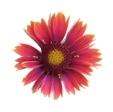









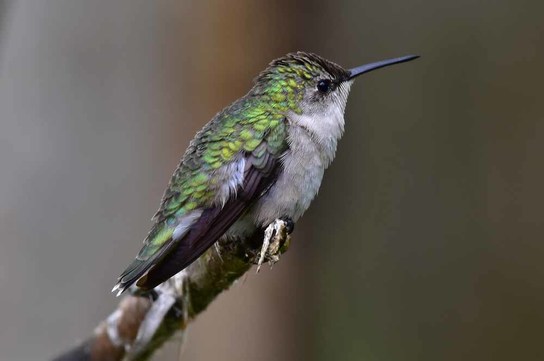





 RSS Feed
RSS Feed